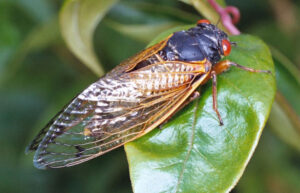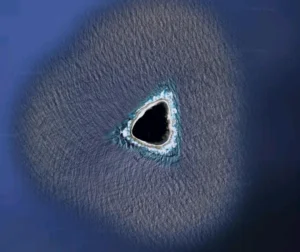The Qitdlarssuaq story has not been made into a movie yet, but it should be. It has all the ingredients of epic drama: murder, magic, rivalry, cannibalism, and a heroic figure both dark and charismatic. Qitdlarssuaq –- the great Qitdlaq –- was a man “little encumbered by scruples,” as one scholar described him. “A man’s life was for him an affair of no great significance.”
Qitdlarssuaq was born in the early 1800s around Cape Searle on Baffin Island, near what is now Auyuittuq National Park. In 1832, Qitdlarssuaq murdered a man as a favor to his hunting companion Oqe. Vendettas among the Inuit of that era were common, and both Qitdlarssuaq and Oqe were now marked men.
To breathe easier, they gathered a group of family and friends and moved to northern Baffin Island. As many as 50 Inuit joined the migrants, a testimony to Qitdlarssuaq’s charisma. He must have sold the move as a quest for a better life rather than as a strategic withdrawal.
The Battle of the Iceberg
After almost 20 years, the victim’s determined relatives caught up with them on the east coast of Bylot Island, a picturesque circumflex off northern Baffin. Qitdlarssuaq and his allies cut steps up a frozen-in iceberg, which they used as cover from the hail of arrows and as high ground from which to launch their own retaliative salvos. Eventually, the attackers withdrew. Although they’d repelled the invaders, it was clear to Qitdlarssuaq that it was time to move again.

For years, between spates of travel, the migrants lived on southern Devon Island. Photo: Jerry Kobalenko
That spring, they crossed the shifting ice of Lancaster Sound and settled on the south coast of Devon Island. Not much distance separated them from another attack –- on a clear day, you can see the snowy crown of Bylot Island from their camp -– but the open water and pack ice was a good barrier against vengeance-seekers. The attackers never troubled them again.

Children from Qitdlarssuaq’s group, photographed by Commander Inglefield on southern Devon Island in 1853. Photo: National Maritime Museum
Meeting Inglefield and McClintock
For years, the migrants hunted the area’s abundant walrus, bears, and seals. In 1853, Qitdlarssuaq met Commander Inglefield of the British Navy, whose ship was in the region to stock a food cache. By 1858, Qitdlarssuaq’s group had moved 80km east, to Philpots Island. In fact a peninsula, Philpots is a comparatively lush oasis on an otherwise barren coast. That summer, Qitdlarssuaq bumped into a second British explorer, Leopold McClintock. Through McClintock’s interpreter, Qitdlarssuaq heard about the Polar Inuit of Northwest Greenland for the first time.
By now, Qitdlarssuaq had a reputation as a formidable shaman. A glow was said to hover above his head as he walked at night — a reference, perhaps, to his bald pate, unusual among Inuit. Stories exist of him turning into a polar bear, or into a bird that went off on long reconnaissance flights. During one of these flights, Qitdlarssuaq brought back news of the Polar Inuit to the north. Probably he forgot to mention that McClintock had already told him about them.
At this point, their migration becomes more a spiritual quest than a flight from trouble. Philpots Island had good hunting, with no vengeful figures from the past to imperil them. But in 1859, after eight years on Devon Island, the aging but still-vigorous Qitdlarssuaq convinced the group to move north again.
Family groups travel far more slowly than a hunting party. Their six-metre-long komatiks –- a necessary length to protect their fragile kayaks –- would have struggled to maneuver through rough sea ice. Such a large group would also have needed to stop for long periods to hunt.
When morale sagged, the inspirational Qitdlarssuaq spurred them on with the eternal motto of the traveler: “Do you know the desire to see new lands? Do you know the desire to meet new people?”
Rivalry between two leaders
Nevertheless, by the time they reached Orne Island, a low speck off the east coast of Ellesmere, a schism had developed between Qitdlarssuaq and his old accomplice Oqe. Oqe had long been sullen, and now he began to speak wistfully of whale meat and other culinary favorites that they had enjoyed at their old Baffin haunts. He began to “long for the ‘onions of Egypt’,” as scholar Guy Marie-Rousselière put it.
So now two groups, the forward-lookers led by Qitdlarssuaq and the backward-longers led by Oqe, shared an uncomfortably small spit on Orne Island. Their two clusters of qammaqs — sod, stone, and whalebone shelters — are about as distant as physically possible on that appendix of land.

One of Qitdlarssuaq’s sod-and-whalebone qammaqs on Orne Island. Photo: Jerry Kobalenko
Like Philpots Island and south Devon, Orne Island offered great hunting. It lay on the edge of the North Water polynya. Seals sunned on the sea ice; heaps of walrus drifted past on floes; polar bears passed constantly and even gave birth in nearby Talbot Inlet. Little wonder that despite tensions, both groups remained there for two years.
Half the group return home
Finally, around 1862, Oqe and at least 24 followers turned south toward home. There is no evidence that they ever made it. A year later, Qitdlarssuaq and up to 18 others pressed north another 150km to Pim Island. Then they crossed frozen Smith Sound to Greenland.

An old Inuit qammaq at Etah, Greenland. Photo: Jerry Kobalenko
Near Etah, a hunting camp often used by American and British expeditions, the migrants found a cabin left by U.S. explorer Isaac Israel Hayes. Lighting a fire inside, they touched off some of Hayes’s explosives. Several died. The following spring, they met their first Greenlander. An old injury had left the man with one leg; an explorer’s physician had given him a wooden stump, on which he limped around fluidly. Qitdlarssuaq wondered if this was a land of wooden-legged people.
The Polar Inuit of Northwest Greenland had been isolated for centuries by the near-impassable ice porridge of Melville Bay. Only about 140 of them remained, in scattered communities. Over the centuries, they had forgotten how to make the kayak, the bow and arrow, and the fish leister, or three-pronged spear. This meant they couldn’t hunt caribou or char, and even their marine mammal opportunities were limited. They were within one bad hunting season of dying out entirely.
Mixing with the Greenlanders
Qitdlarssuaq and his group soon integrated with the Polar Inuit and re-introduced that crucial technology. Their dialects were different, but they could understand one another. Several inter-married. The migrants revitalized a vanishing culture.
It would have seemed that the aged Qitdlarssuaq had found peace at last.
But this arctic Greek myth had one act remaining. Qitdlarssuaq had a falling out with a Greenland shaman. His people and even some Greenlanders pressured him to murder the rogue conjuror. With what must have been great reluctance, Qitdlarssuaq complied. He ambushed the man outside his snow house and stabbed him to death in the armpit. It is odd that as strong a personality as Qitdlarssuaq seems always to have acted as the hit man for others.

According to some accounts, the shaman was buried near this neck of land at Cape Herschel, Ellesmere Island. (The tent ring in the photo is contemporary.) Photo: Jerry Kobalenko
Qitdlarssuaq dies
Soon after, Qitdlarssuaq’s health began to fail. Ever the roamer, he longed to see his native land one last time. About 20 of the original migrants agreed to join him. But the party had barely crossed back to Ellesmere Island when Qitdlarssuaq died of a stomach ailment, around 1870. Some say he was buried on the ice, others on land at Cape Herschel.
Although Qitdlarssuaq was dead, his momentum continued to propel his followers forward. Soon they were back on Orne Island. Then a fateful error: They decided to move to Makinson Inlet, 150km south on Ellesmere when one hunter brought back favorable reports of caribou, muskoxen, and fish. By the time they reached Makinson and discovered that it was not as fertile as promised, it was too late in the season to return to Orne Island.
The place of great famine
They built qammaqs on the shore of a lake, then hunkered down for the winter, starving. Several died. Two men first ate some of the bodies, then began to kill the living in order to feed on them. One young man named Merqusaq managed to fight off the cannibals but lost an eye in the struggle. He and four others fled the dark doings of that camp, which they called Perdlerarvigssuaq –- the place of great famine. Two years afterward, in 1873, the five survivors managed to return to Greenland.

Merqusaq in later years.
Decades later, the fantastically weathered, one-eyed Merqusaq told the story of the Qitdlarssuaq migration to explorer and ethnographer Knud Rasmussen. It is thanks to Merqusaq’s survival that many details of the Qitdlarssuaq saga also survived.
Today, over one-third of the Polar Inuit are direct descendants of those bold migrants from Baffin Island.






